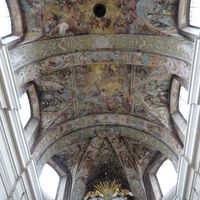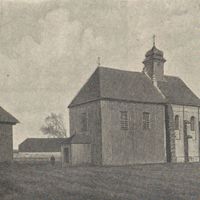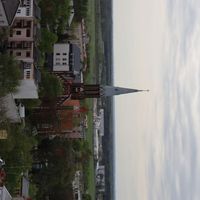Łowicz
7.08

Overview
Łowicz is a city in Poland, located in the Łódź Voivodeship, with a rich history dating back to medieval times. The earliest mention of Łowicz comes from a papal bull issued by Pope Innocent II in 1136, and the city was granted municipal rights before 1298. Architecturally, Łowicz stands out with numerous valuable monuments, including the Cathedral Basilica, whose monumental Baroque-Renaissance form was established between 1625 and 1658. Other significant sites include the Piarist Church with its Rococo façade, the former Evangelical church converted into an art gallery, and the ruins of the Primatial Castle, which served as the residence of the Archbishops of Gniezno. The city also features a unique triangular market square, preserved thanks to its medieval urban layout.
Łowicz's culture is deeply rooted in folklore, renowned for its distinctive paper cut-outs, colorful traditional costumes, and folk music. The Festival of Folk Art attracts regional groups from across Poland and abroad, and the tradition of nurturing folklore is reflected in numerous projects and museums, such as the Museum in Łowicz and the open-air museum in Maurzyce. During the interwar period, Łowicz became the site of significant events related to the birth of the Second Polish Republic, and during World War II, the city suffered extensive destruction, including the imprisonment and persecution of its Jewish population. Notably, John Paul II visited Łowicz twice, and during his 1999 visit, he elevated the cathedral to the status of a Minor Basilica.
Łowicz is also known for unique traditions, such as the Corpus Christi Procession, where participants dress in folk costumes. An interesting fact is that the city served as the second capital of the Polish-Lithuanian Commonwealth during interregnum periods. Today, Łowicz is developing as a cultural hub with numerous institutions, including museums and galleries, as well as sports facilities, making it an important location on the map of Poland.
Location
Tickets
Powered by GetYourGuide
2025 Wizytor | All Rights Reserved




